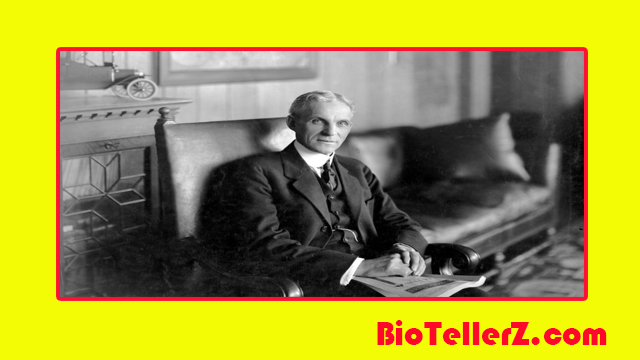Henry Ford was born on July 30, 1863, in Wayne County, Michigan, U.S. S. —died April 7, 1947, Dearborn, Michigan), an American industrialist who popularized assembly-line manufacturing.

Type T
Ford made news for the majority of his life, whether it was good or bad. FThe man known for his technological prowess and status as a folk hero, ord, was the impetus behind an industry that reached previously unheard-of levels of wealth and size. fundamentally changed the economic and social structure of the United States in a short period of time. Only two out of every eight Americans lived in cities when young Henry Ford left his father’s farm in 1879 to move to Detroit; by the time he passed away at the age of 83, that number had increased to five out of every eight. Ford was adamant to reverse this change or, at the very least, to atone for the significant role he and his Model T played in bringing about it. return to the rural values of his boyhood. Henry Ford is a good example of how America went from being an agricultural to an industrial country.
Young age
William and Mary Ford had eight children, and Henry Ford was one of them. He was born on the family farm close to Dearborn, Michigan, which was a small community eight miles west of Detroit at the time. Jefferson Davis presided over the 11 Confederate states, while Abraham Lincoln presided over the 24 members of the Union. When he wasn’t assisting his father with the harvest, Ford spent his first eight years of education in a one-room school. At the age of 16, he strolled to Detroit in search of employment in its machine shops. After three years, in which he had his first experience with an internal combustion engine, he returned to the farm. There, he worked part-time for the Westinghouse Engine Company and experimented with machines in his spare time in a small machine shop he had set up. In the end, he created a small “farm locomotive,” a tractor with an old lawnmower as its chassis and a homemade steam engine for power.
Management over the business
The Ford Motor Company produced eight different models in its first five years, and by 1908, it was turning out 100 vehicles per day. The stockholders were thrilled, but Ford was dissatisfied and wanted to produce 1,000 vehicles per day. The stockholders considered taking him to court to prevent him from expanding with the proceeds. Ford, who held 58 percent of the company’s stock, declared in 1909 that he would only produce the Model T moving forward. Minority stockholders had no choice but to sue him in 1916, which Horace and John Dodge did, to defend their dividends from his insatiable imagination.
Henry Ford’s later years
Ford’s personal success in seizing complete control of the company and ejecting employees who held opposing views helped pave the way for decline because of the unprecedented scale of that success. Ford refused to follow other automakers in offering such cutting-edge features as conventional gearshifts (he held out for his own planetary gear transmission), hydraulic brakes (rather than mechanical ones), Options included six- and eight-cylinder engines (the Model T had a four), as well as color options (all Model Ts were painted black starting in 1914).. Ford did this because he believed he had an uncanny instinct for the market. He shut down his factories for five months to retool after finally coming to the conclusion that the market had evolved and needed more than just a utilitarian vehicle. He unveiled the Model A in December 1927. The new model had moderate but not dazzling success. Because of Ford’s intransigence, General Motors’ Chevrolet and Chrysler’s Plymouth outsold the Model A, which was eventually discontinued in 1931. Ford Motor Company was third in sales in the industry by 1936 despite the launch of the Ford V-8 in 1932.
